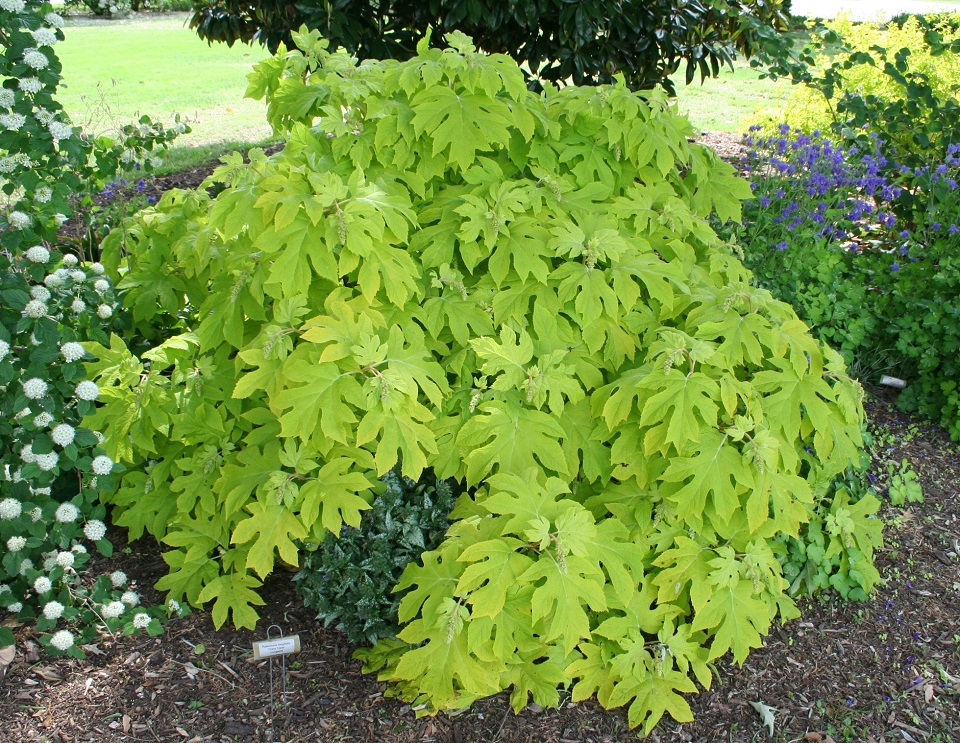
Submitted by Jason Reeves, Horticulturist, UT Gardens, Jackson
Few plants brighten up a shady spot in the garden like oakleaf hydrangea ‘Little Honey’. In April, its new foliage emerges a luminescent yellow and ages to chartreuse by midsummer. Its small 5- to 6-inch white, cone-shaped panicles are at their best in mid-June and are nondescript compared to other oakleaf hydrangeas, but the foliage makes up for them. In the fall the foliage turns a brilliant orange red and persists through December. As with all oakleaf hydrangeas, the bark peels with age and is an attractive addition to the winter garden.
Little Honey is best grown in morning sun and afternoon shade for optimum leaf color. Given too much shade, the oak leaf-shaped foliage turns green by midsummer and its fall color is less intense. In cooler areas of Tennessee, it can take a good bit more sun, intensifying its fall color.
Little Honey is a standout in the any partly shady area of the garden or on the east or north side of a house. A dark-colored house such as one made of red brick really makes it glow.
Most literature and labeling states that Little Honey will reach 4 feet tall and wide, but the 7-year-old plant at the University of Tennessee Gardens in Jackson is 6 feet tall and 5 feet wide. Several others of equal size are known to be growing in the region. Little Honey is among the many cultivated plants that can’t read their own label.
Native to the southeastern U.S., oakleaf hydrangeas prefer fertile, moist but well-drained soil and will not tolerate excessive moisture. Little Honey is no exception. It sometimes can be slower to establish than other oakleaf cultivars, so don’t give up if your first attempt doesn’t impress. The plant is hardy to USDA plant hardiness zone 5.
Jason Reeves is a Horticulturist and Research Associate at the West Tennessee AgResearch and Education Center in Jackson. The UT Gardens located in Knoxville and Jackson are part of the University of Tennessee Institute of Agriculture. Their mission is to foster appreciation, education and stewardship of plants through garden displays, collections, educational programs and research trials. The gardens are open during all seasons and free to visit. Some educational events are fee-based. See http://utgardens.tennessee.edu/ and http://westtennessee.tennessee.edu/ornamentals/ for more information.
Contacts:
Jason Reeves, UT Gardens, Jackson, 731-424-1643
Patricia McDaniels, UTIA Marketing and Communications Services, 615-835-4570